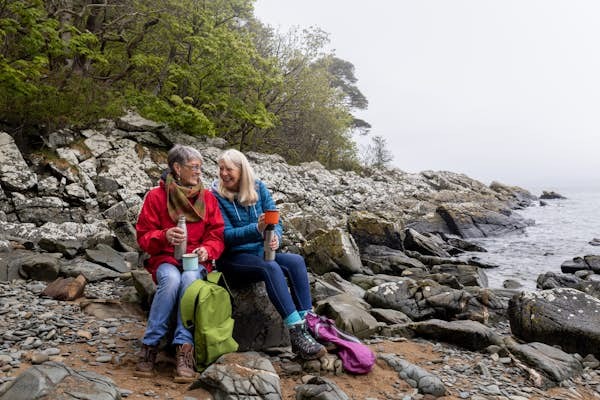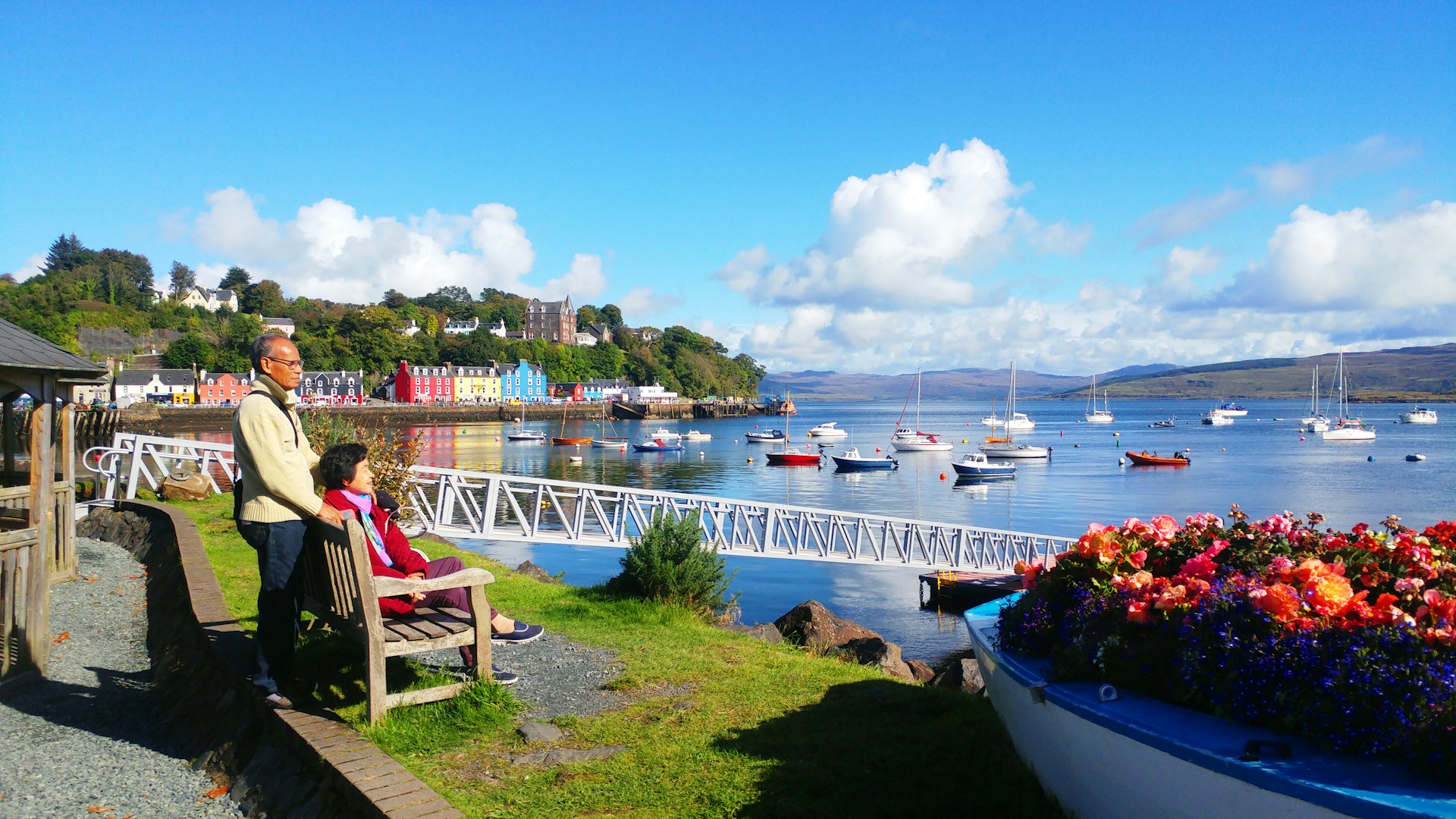
For all its lavish castles, ornamented palaces and hunting estates for the well-to-do, Scotland is a nation of shrewd spenders.
Small wonder locals are said to have short arms and deep pockets, meaning theirs is a culture often driven by the need to save money, spend wisely and maximize fun. Virtue is always found in frugality.
The country itself also seems to have been born with the thrifty in mind. So many world-class sights are gloriously free and, from rippling mountains to deep sea lochs to heather-mussed glens, traveling on a tight budget is stress-free. All you need is a sense of adventure and to know that food, transportation and accommodation are as expensive, or as cheap, as you want to make them.
Here are our top tips and travel hacks to help you save money on a visit to Scotland, along with a guide to daily costs.
Make the most out of every adventure with help from our weekly newsletter delivered to your inbox.  Our guide to daily costs in Scotland can help you plan your finances © pitch00 / Shutterstock
Our guide to daily costs in Scotland can help you plan your finances © pitch00 / Shutterstock
Daily costs
Hotel room: £80–150
Campsite: from £12
Public transport ticket: £2–4
Coffee: £3.50
Sandwich: £4
Dinner for two: £60–80
Beer/pint at the bar: £5–6
Bottle of Irn Bru: £2
Dram of whisky: £5–7
Haggis, neeps and tatties in a pub: £12
Wild camping: Free
Whale and dolphin watching from land: Free
As a rough guide, a total average daily cost, covering three meals a day, plus accommodation and a small budget for activities, should cost in the range of £120–170. Note, this depends on numerous factors, including on where you choose to stay and eat, and whether you are in a pricier destination like Edinburgh or Glasgow or not.
Visit at the cheapest time of year
It’s a given that summer is the busiest season to visit. You can expect the warmest temperatures and sunniest days for hill walking, watersports, golfing and island-hopping, plus festival season is in full swing — in particular, the Edinburgh Festival Fringe turns the capital upside down (in a good way) every August. By virtue of this, it also makes it the most expensive time to visit the city, with accommodation rates almost doubling throughout the month.
Other times to avoid to keep your budget on track are December and January. The Hogmanay festivities drive prices up during the post-Christmas New Year period and, after the turn of the year, the party continues unabated. Celtic Connections brings in thousands of folk-spirited music fans to Glasgow, while nationwide ceilidhs on Burns Night on January 25 and Up Helly Aa, held on the last Tuesday in January in Lerwick, Shetland, always see a visitor influx.
As a rule of thumb, April to June are commonly the best all-round months to visit, with the countryside relatively-rain free, meaning free wild camping is on the agenda after the winter snows and before the midge clouds start to make a nuisance of themselves.
 Heading for the Highlands? Flying into Inverness instead of Edinburgh might be cheaper © SHansche / Getty Images
Heading for the Highlands? Flying into Inverness instead of Edinburgh might be cheaper © SHansche / Getty Images
Figure out which airport is the cheapest to fly to — and if it’s actually worth it
Scotland’s capital Edinburgh is connected to more UK, European and international destinations than anywhere else. But in peak season that can make it more expensive than arriving in other gateway cities. If traveling onwards to the Highlands, for instance, consider flying into Inverness or Aberdeen. Likewise, Glasgow is a better bet if your destination is the wind-whipped golf coast of Ayrshire, beach-bejewelled Kintyre, or the whisky havens of Southern Hebrides.
In the same manner, rental car prices vary dramatically. Edinburgh is the main point of arrival for most visitors (the international airport handled 11.2 million passengers in 2022, compared to around 1 million at Inverness Airport), so expect rates to be more competitive elsewhere.
Rent an electric vehicle and charge for free
A milestone for a more meaningful trip, Scotland was the first place in the UK to offer electric campervan rentals. They first arrived in Orkney, where there are now more super chargers than petrol stations, and going electric is increasingly a way of life. It’s easier than ever to hire an electric vehicle or green motorhome, then take advantage of free charge points. In fact, Scotland is now scattered with more than 1500 chargers and the network is accelerating at pace.
Or save by riding a bike
Cycling too is on the up. Bikepacking (when you travel with only the bare essentials) is one of the country’s fastest-growing sports and the fixation on traveling lighter, slower and more sustainably is becoming an addiction. Added to this, new routes and trails are appearing on the map all the time. The latest is the Kirkpatrick C2C, a 250-mile journey across southern Scotland from Stranraer on the west coast to Eyemouth overlooking the swells of the North Sea.
Take the train when traveling with your family
Bringing the kids along? Then you’re in luck. Under 5s always travel free on trains and weekend tickets with national operator ScotRail only cost £1 return each for up to four kids for every paying adult.
 Bikepacking is a very low-cost way to travel around Scotland © Justin Paget / Getty Images
Bikepacking is a very low-cost way to travel around Scotland © Justin Paget / Getty Images
You can stay for free, anytime you want
Unlike the rest of the UK, wild camping is permitted throughout Scotland. The urge to sleep under canvas is strong and everyone has unrivalled access to the country’s dramatically different landscapes and seasons. Want to sleep overlooking a Hebridean beach? Or pitch your tent at the top of a Munro (a mountain with a height over 3000ft/914m), to appreciate both sunset and sunrise? Go right ahead.
Exceptions to this rule are in effect in Loch Lomond and the Trossachs National Park, which is restricted to permit-only pitches from March 1 to September 30. During this time, you will need to sleep in a camping management zone, with permits costing £4 per tent or campervan per night.
Save by sleeping in one of Scotland’s no-frill ‘bothies’
As life-affirming as they are low-key, the ‘bothy’ is a uniquely Scottish phenomenon: a bare-bones, shelter-style accommodation.
Most are completely off-grid, almost closely-guarded secrets tended by voluntary stewards and requiring long walks or bike rides to reach their locations. Others offer different challenges and sit on unsignposted, lonely passes, with only the most basic of facilities — at many, you’ll be beyond 4G network reception, so make sure you take a map and know how to read it beforehand.
Certainly, the reward is a free bed for the night, as long as you respect the leave-no-trace philosophy. You’ll have to carry in all your supplies (food, sleeping bag, candles), fetch water from a nearby stream,and share your temporary home for the night with whoever else turns up. On such nights, whisky shared around the fire turns into a sort of communion. It’s also worth noting there is no booking system. But is it worth it? Undoubtedly. The Mountain Bothies Association is an excellent resource.
There are terrific cheap eats everywhere
Scotland’s larder might grasp your imagination, with thoughts of langoustine and lobster, haunch of roe deer and Highland wagyu. But budget eats and character-building savory items are far more common in cafes, pubs and takeaways. These snacks include sausage rolls, Scotch pies and anything beige in color or deep-fried, from fish and chips to even burgers, pizzas and pakoras (Indian-style fritter). For the record, no one in Scotland ever eats a battered Mars Bar.
For dishes with more razzmatazz, Edinburgh and Glasgow now have more Michelin-star restaurants than at any other time in their history, and inexpensive 2- and 3-course lunches for around £35 are a terrific way to eat exceptionally, without the need to splash out. Such edible joy, at prices less than you might think, can be found at The Little Chartroom, Fhior, The Lookout by Gardener’s Cottage, The Palmerston, Aizle and Skua in Edinburgh, and Unalome by Graeme Cheevers, Ox and Finch and The Gannet in Glasgow. Check websites in advance for lunch specials and pre-theater deals.
Don’t buy drinks, take a water bottle
A hard truth is so many countries have terrible drinking water right from the tap. Not Scotland. This is a destination with some of the freshest, cleanest H2O anywhere on the planet. Bring a reusable bottle and help save on plastic and your budget.



